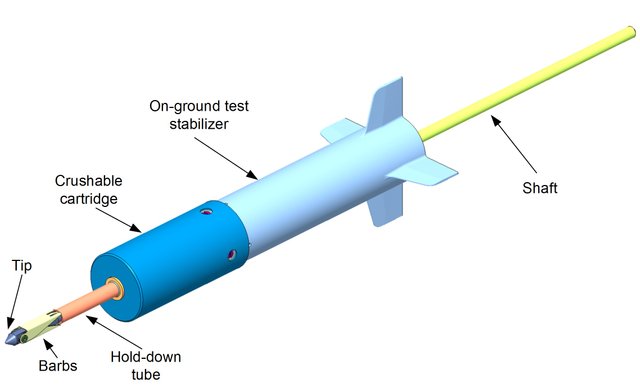
On July 2, a satellite destined to measure and monitor ice from the poles, called CrioSat-2, operated by the European Space Agency, orbited, as usual, about 700 meters above ground when the engineers in command They detected a piece of space scrap floating in their direction. Following the trajectory of both objects, they found that the probabilities of an impact did nothing but increase, so a week later they decided to start up their propulsion system and place the CrioSat on another trajectory. 50 minutes after completing the maneuver, the scrap was crossing its previous position at a speed of approximately 4 km per second.
This type of maneuvers to avoid accidents has become more and more common as the satellites, probes and pieces of both that populate our orbit increased. In 2017, companies, governments and armies, as well as amateur projects, launched 400 satellites into space, four times more than the annual average between 2000 and 2010. The numbers can increase even more if companies like Boeing or SpaceX go ahead with plans already announced to place strings of communications satellites that will equal in quantity all those sent throughout the history of space exploration.
Zombie garbage, risk of collision
We are not just filling the garbage space like we are doing with the Earth. The most urgent problem is that this can become a danger. In 2009 a US commercial satellite collided with a Russian communications satellite already out of use, creating thousands of new pieces of garbage with which other satellites can now collide, and every movement to avoid consumes fuel that in theory must be used for the mission of each satellite in question. It is like a laborious video game in which it is increasingly difficult not to hit something while the source of energy, limited from the beginning, is running out.
So different teams of scientists are trying different approaches to find a way to solve the problem. Some have chosen to make a detailed record of all the objects that swarm in Earth's orbit, a total of about 20,000, detailing their size and shape so that the engineers of these projects know how to handle their satellites around each one in case of encountering them. Others are trying to place all those objects in their respective positions to map the space debris. Others want to determine safe orbits and trajectories for the new satellites.
Nets and harpoons for fishing space junk
Some are looking for methods to reduce the amount of scrap that floats in Earth orbit, and one of those projects has been considered fishing as if they were sperm whales and lived in the nineteenth century: based on nets and harpoons. The project is called RemoveDEBRIS, has been developed by the University of Surrey, in the United Kingdom, and will perform 4 experiments in which will test some concepts and possibilities that could help reduce the amount of debris swarming in the Earth's lowest orbit with a moderate cost.
The second experiment will take place at the end of October, and in this one will launch another cube and will use a laser system to scan it and learn from it as much as possible, as well as find a way to navigate around it.
In the third, calculated for the beginning of February of 2020, RemoveDEBRIS will extend a robotic arm of one and a half meters, will place a plate as objective and will launch a harpoon against it to leave it hooked.
The fourth and last is expected to take place in March. For its last test, the satellite will deploy a mast and a sail, which will serve as an impulse system to lower the object to a lower height, where it will eventually disintegrate by friction against the atmosphere.
References:
Satellite studying Earth’s diminishing ice swerves to avoid collision – Rocket Science Blog, ESA.
Kaputnik chaos could kill Hubble – Nature
The quest to conquer Earth’s space junk problem – Nature
Stand back, Aquaman: Harpoon-throwing satellite takes aim at space junk – Nature
RemoveDEBRIS – University of Surrey

Awesome!
Downvoting a post can decrease pending rewards and make it less visible. Common reasons:
Submit
Downvoting a post can decrease pending rewards and make it less visible. Common reasons:
Submit
We need more like this!
Downvoting a post can decrease pending rewards and make it less visible. Common reasons:
Submit
That's sounds really cool! this scientists are awesome!

Downvoting a post can decrease pending rewards and make it less visible. Common reasons:
Submit
Great post!
Downvoting a post can decrease pending rewards and make it less visible. Common reasons:
Submit
You just received a 8.96% upvote from @honestbot, courtesy of @mofeta!

Downvoting a post can decrease pending rewards and make it less visible. Common reasons:
Submit
You got a 13.17% upvote from @oceanwhale courtesy of @mofeta! Earn 100% earning payout by delegating SP to @oceanwhale. Visit www.OceanWhaleBot.com for details!
Downvoting a post can decrease pending rewards and make it less visible. Common reasons:
Submit